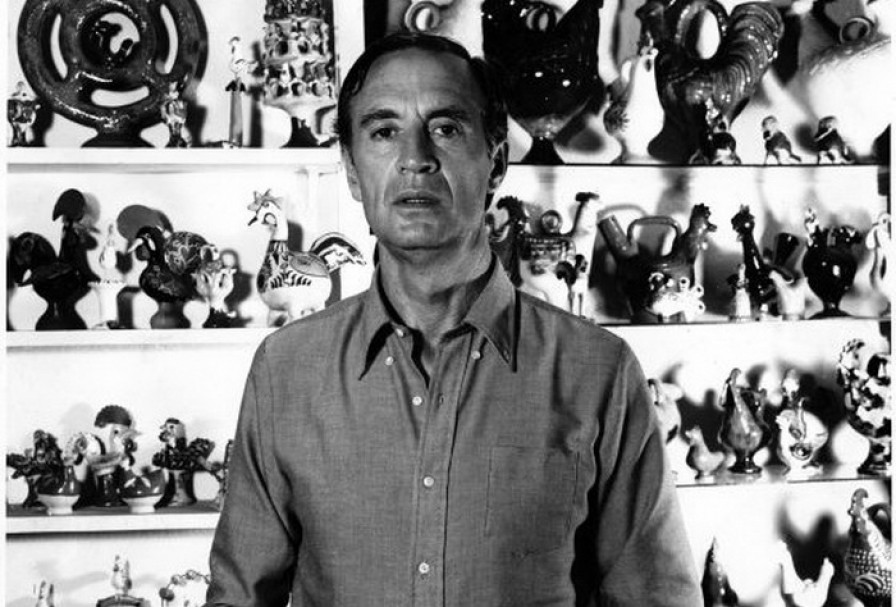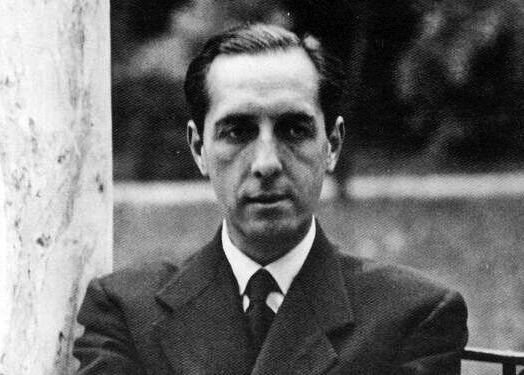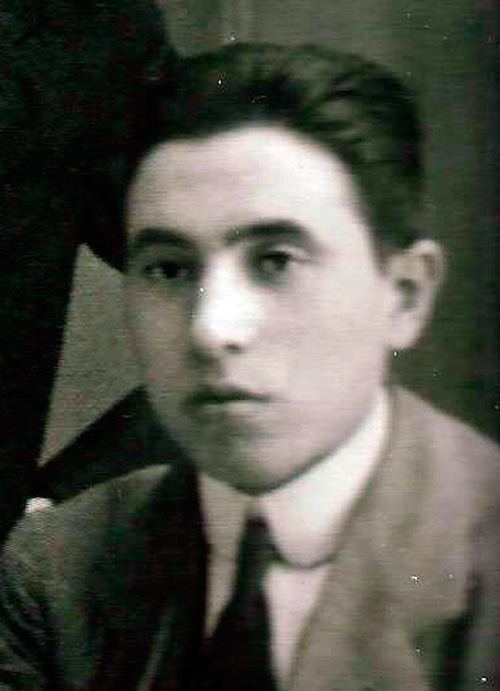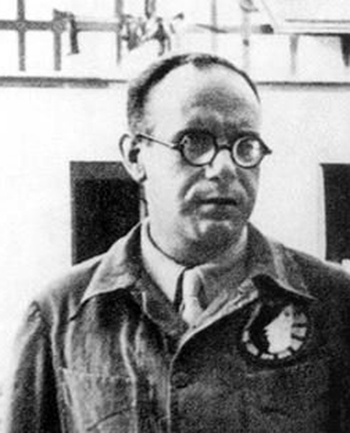Journalist and art critic, who was born in Albacete in 1917 and died in Madrid in 2010. He collaborated in La Estafeta Literaria and authored six books on architecture. He had an intense and truncated love affair with Federico García Lorca in the final years of his life which, according to some researchers, inspired Sonnets of Dark Love, a collection of eleven poems that was withheld for many years by the poet’s heirs to the point of being considered lost and which appeared officially published for the first time in the newspaper ABC in 1984, the newspaper where Ramírez de Lucas collaborated. Ramirez, a very discreet person, kept his relationship with Lorca a secret for 70 years. Except for his older brother, Otoniel, the rest of his family knew nothing. A year earlier, in 1983, 250 copies of the sonnets were distributed anonymously to critics and authors without a publisher’s stamp and printed in red ink on pink paper.
According to his brother Jesús, “in his memoirs [Juan Ramírez] says that the first time he saw Lorca he was not at all struck by him, that he found him, he says literally, ‘short, a little fat and big-headed’. But later he was attracted by the magnetism that Lorca had…”
Ramírez de Lucas was 19 years old when he planned to escape to Mexico with Lorca, but his family, of very conservative thinking, even more so in the troubled days of the Republic, alleged that he was a minor and threatened to denounce the case to the Civil Guard. His father, Otoniel Ramirez Garcia, was a forensic doctor and the head of a family of ten children. Otoniel, the first-born, more liberal, joined the PSOE and ended up in exile in Mexico. He tried unsuccessfully to intercede with his father so that he would authorize the trip. Ramirez had come to Madrid from his native Albacete to study Public Administration, but as the civil service destination did not satisfy him and his creative vein prevailed, he joined the Anfistora Theater of Pura Maourtua de Ucelay, a company of amateurs who had set up, at the suggestion of the author, The Shoemaker’s Prodigious Wife and the Love of Don Perlimplín with Belise in the Garden. During a rehearsal he met Lorca.
Another brother of his, Jesús, recounted in El Periódico in 2017: “In his memoirs he says that the first time he saw Lorca he was not at all struck by him, that he seemed to him, he says literally, `short, a little fat and big-headed’. But then he was attracted by the magnetism that Lorca had, this is not only said by Juan Ramirez de Lucas but it also by Luis Cernuda, Vicente Aleixandre, and Luis Rosales…. It was the magnetism that when he arrived in a room he filled it and was the center of attention. And, nevertheless, that first reaction of coldness perhaps made Lorca notice him in a different way. Let’s say that he started from an initial rejection”.
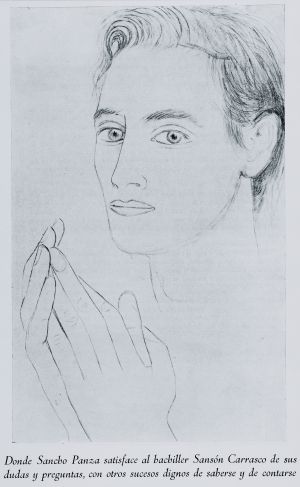
Other researchers, such as Ian Gibson, argue that the dedicatee of the eleven sonnets was Rafael Rodríguez Rapún, Lorca’s personal secretary in La Barraca, who had another intense sentimental relationship with Federico between 1933 and 1936. Rapún died fighting during the Civil War on the Northern Front. However, the conjecture that points to Juan Ramírez gained strength with the appearance of new evidence.
Ramirez de Lucas was the addressee of the last letter written by Lorca in the Huerta de san Vicente farmhouse before his assassination. In the missive, dated July 18, 1936, St. Federico’s Day, a feast that the Lorca family used to celebrate with a family gathering, the poet tries to calm the disillusioned Ramirez because of his father’s resistance: “You can always count on me. I am your best friend and I ask you to be political and not let the river take you away. Juan: you must laugh again. Big things have also happened to me, not to say terrible things, and I have dealt with them with grace”.
The appearance in 2012 of the novel The Dark Loves by Manuel Francisco Reina put the spotlight on Ramírez de Lucas, a specialist in architecture forged as a critic in the magazines Arquitectura of the newspaper ABC and Arte y cemento of Bilbao. The fictional account, which begins with the phrase “I was Lorca’s last love and, perhaps, the reason for his death”, states that Ramírez de Lucas, whom the poet christened in a ballad as “the blond from Albacete”, was the reason Federico did not flee after the outbreak of the Civil War and persisted in traveling to Mexico with the company of Margarita Xirgu.
Ramírez de Lucas was the recipient of the last letter written by Lorca in the Huerta de san Vicente before his assassination
The researcher Agustín Penón, who visited Granada in 1955 to investigate the poet’s death and write a book, mentions Ramírez de Lucas after interviewing Pura Maortua de Ucelay: “It seems that Federico’s last love was precisely a young actor of the Anfistora Club, a very handsome and very attractive boy. His name was Juan Ramirez, he was from Albacete and belonged to a good family. Federico was crazy about him. He promised him that he would make him a great actor, that he would take him abroad, to all the theaters, that he would be acclaimed all over the world”.
Ramirez de Lucas kept for himself some evidence of the intense relationship with Lorca, in particular the ballad dedicated by Federico during a trip they both made to Córdoba and in which he uses, like San Juan de la Cruz, the adjective “dark” to refer to the poet’s night: “Aquel rubio de Albacete [“That blond from Albacete]/ vino, madre, y me miró [came mother, and looked at me]. / ¡No lo puedo mirar yo! [I can’t look at him!]/ Aquel rubio de los trigos [That blond of the wheat]/ hijo de la verde aurora, [son of the green dawn,] / [alto, solo y sin amigos tall, alone and friendless] / pisó mi calle a deshora. [stepped on my street after hours.] / La noche se tiñe y dora [The night is tinged and gilded] / de un delicado fulgor. [with a delicate glow.] / ¡No lo puedo mirar yo! [I can’t look at him!] / Aquel lindo de cintura [That pretty one with a waist] / sentí galán sin… [I felt gallant without…] / sembró por mi noche obscura [he sowed through my dark night] / su amarillo jazminero [his yellow jasmine tree] / tanto me quiere y le quiero [he loves me so much and I love him] / que mis ojos se llevó. [that he took my eyes.] / ¡No lo puedo mirar yo! [I can’t look at him!] / Aquel joven de la Mancha [That young man from La Mancha] / vino, madre, y me miró [came mother, and looked at me] / ¡No lo puedo mirar yo!”. [I can’t look at him!]”.
Ramírez de Lucas kept silent for 70 years but did not want his secret to disappear with him and before his death he gave his legacy to his brothers so that they could make it public: a box with drawings, letters and a diary, still unpublished, where he wrote down the contradictory emotions of his passion for Federico.
According to Manuel Francisco Reina’s thesis, Lorca began writing the sonnets in 1935 and continued as his relationship with Ramírez progressed, although perhaps he was not the only one who served as inspiration: “He wrote them as a tribute to St. John of the Cross, but also as a symbol of silent suffering until he found true love. Surely there were many remnants of other passions, the result of the experience left by each of his loves in those verses, but always the last love, as also happens with friends, is the one that weighs the most,” he says in an interview published in El País.
After the Civil War, Juan Ramirez, shocked by the murder of Lorca, enlisted in the Blue Division and, on his return, and thanks to the intervention of Luis Rosales, in whose house the poet was arrested in August 1936, he joined the newspaper ABC where he began his career as an art critic. Ramírez de Lucas kept silent for 70 years but did not want his secret to disappear with him and before his death he gave his legacy to his brothers so that they could make it public: a box with drawings, letters and a diary, still unpublished, where he wrote down the contradictory emotions of his passion for Federico. According to Juan Ramirez’s brothers, the documentation is divided into two stages. One that begins in 1934 and another that begins two years later. “He talks about his relationship with Lorca, when he met him, his relationship with painters, writers, of a whole literary and artistic generation without parallel. He talks about the trips they made together. Lorca always thought Juan had the makings of an actor and told him: `I’m going to make you the best actor and you’re going to participate in my plays, I’m going to tour Mexico, I’m going to tour Latin America and you’re going to be the protagonist’.”
